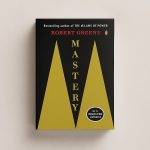Start with Why by Simon Sinek (full title Start with Why: How Great Leaders Inspire Everyone to Take Action) explores why some leaders and organizations inspire deep loyalty, while others struggle to motivate beyond transactions. Sinek’s core message “people don’t buy what you do, they buy why you do it” centers on the Golden Circle framework: Why, How, and What. Drawing from stories of Apple, the Wright brothers, Martin Luther King Jr., and others, the book shows how beginning with a clear purpose fosters trust, commitment, and innovation. It is both a leadership philosophy and a practical guide for anyone aiming to lead with clarity, consistency, and authenticity.
1. Introduction to The Start with Why by Simon Sinek
Start with Why by Simon Sinek was first published in 2009 and quickly became a recognized modern classic in leadership literature. Its central premise is deceptively simple yet profoundly powerful: the most inspiring leaders and most successful organizations think, act, and communicate from the inside out – starting with “Why” – the underlying purpose, cause, or belief that drives them.
As Sinek explains, most organizations communicate from the outside in, beginning with “What” they do, then “How” they do it, and often neglecting to clarify “Why” they exist at all. In contrast, the leaders capable of rallying deep loyalty – people like Apple’s Steve Jobs, Martin Luther King Jr., and the Wright brothers – begin with “Why,” embedding it into everything they say and do.
The book draws on narratives from business, history, and social movements, combining these with the framework Sinek calls The Golden Circle, and it aims to transform not only how leaders inspire others, but also how individuals approach their own careers, projects, and organizations.
2. Author Biography – Simon Sinek
– Background: Born in 1973 in Wimbledon, London, Sinek moved between the UK, South Africa, and the USA, experiencing diverse cultures that would later inform his views on leadership and purpose.
– Career: Began in advertising with Ogilvy & Mather and Euro RSCG; transitioned to consulting and speaking. Taught strategic communications at Columbia University and served as adjunct staff at the RAND Corporation.
– Breakthrough: His 2009 TEDx Talk “How Great Leaders Inspire Action” became one of the most viewed TED talks ever.
– Other Works: Leaders Eat Last (2014), Together is Better (2016), The Infinite Game (2019).
– Focus: Leadership, purpose-driven business, organizational culture, and human motivation.
3. Core Thesis
Sinek’s thesis rests on the notion that “people don’t buy what you do; they buy why you do it.” Inspiration comes not from selling products or services based solely on features or price, but from tapping into shared beliefs and values. The most successful leaders communicate their belief first (Why), then explain the methods (How), with the product or service (What) serving as tangible evidence of that belief.
This approach builds trust, loyalty, and long-term success – far more effectively than manipulations like price cuts, promotions, fear, or peer pressure.
4. Structure of the Book
Start with Why by Simon Sinek unfolds across six parts, moving from diagnosis to prescription:
Part 1 – A World That Doesn’t Start With Why
Explains how most organizations operate without clarifying their purpose.
Part 2 – An Alternative Perspective
Introduces the Golden Circle and explains the power of starting with Why.
Part 3 – Leaders Need a Following
Shows how trust and shared belief mobilize people to act.
Part 4 – How to Rally Those Who Believe
Connects Why to discipline and consistency, showing how movements form.
Part 5 – The Biggest Challenge Is Success
Explores how organizations lose sight of Why over time.
Part 6 – Discover Why
Provides guidance on finding and articulating one’s personal and organizational Why.
5. Detailed Part-by-Part Summary & Commentary
Part 1 – A World That Doesn’t Start With Why
Sinek begins with compelling contrasts:
– Langley vs. The Wright Brothers: Langley had funding, prestige, and resources; the Wright brothers had passion and belief. The Wright brothers, starting with Why, achieved powered flight first.
– Apple vs. Competitors: Apple’s belief in challenging the status quo differentiates them from companies that focus solely on product features.
Key Insight: Many businesses confuse the stimulus for loyalty with temporary incentives. Manipulations – discounts, fear, aspirational messages – can sell in the short term but fail to cultivate trust or repeat engagement. Over-reliance on these manipulations leaves companies vulnerable to market changes.
Part 2 – An Alternative Perspective
Here, Sinek presents The Golden Circle:
- Why – Purpose, cause, or belief.
- How – Process or values that guide achieving the Why.
- What – The actual products or services.
Most communicate What → How → Why. Inspiring leaders start with Why → How → What.
Apple Illustration:
– Standard company: “We make great computers (What). They’re beautifully designed and easy to use (How). Want to buy one?”
– Apple: “Everything we do challenges the status quo; we believe in thinking differently (Why). We do this by creating beautifully designed, simple products (How). We happen to make great computers (What). Want to buy one?”
Psychology & Biology Connection:
– Sinek relates The Golden Circle to the human brain structure:
– Neocortex (rational, language, What)
– Limbic brain (feelings, trust, behavior, Why)
– Decision-making is emotion-driven; rationalization follows. This explains why starting with Why is neurologically effective.
Part 3 – Leaders Need a Following
Trust: Built when people believe leaders have their best interests at heart.
Examples:
– MLK Jr.: Mobilized millions with a vision anchored in civil rights’ moral necessity (“I have a dream” – not “I have a plan”).
– Southwest Airlines: Founder Herb Kelleher’s belief in affordable air travel shaped a culture employees defended even in downturns.
Tipping Points: Malcolm Gladwell’s “Law of Diffusion of Innovation” shows adoption curves – visionaries and early adopters embrace innovation because they share Why, while laggards adopt only when necessary.
Part 4 – How to Rally Those Who Believe
Clarity of Why attracts those who share it, enabling:
– Hiring for cultural fit over mere skills.
– Consistent messaging – discipline in How and What preserves authenticity.
Sinek emphasizes Symbols: tangible manifestations of Why, from Apple’s product design to Harley-Davidson’s logo tattooed on enthusiasts.
Sales vs. Evangelism: With Why, leaders don’t need to convince; they invite those who already believe to join.
Part 5 – The Biggest Challenge Is Success
Success can ironically cause mission drift:
– As companies grow, leaders change, and focus shifts to What (products, quarterly goals) over Why (beliefs, purpose).
– Split Happens: The founder’s personal clarity of Why dissipates when passed to managers without the same connection.
Case Studies:
– Walmart’s Sam Walton built on a belief in serving communities; later leadership abandoned this purpose for pure profit, harming reputation.
– Apple under Jobs’ absence drifted, regained focus upon his return.
Part 6 – Discover Why
Finding the Why involves reflecting on moments of peak fulfillment:
– Identify core values and beliefs that inspire passion.
– Align decisions and strategies consistently with Why.
– Organizations must instill Why in every level – it cannot merely be a founder’s statement pinned to a wall.
Sinek closes with encouragement: beginning with Why is not simply a leadership tactic but a way to live authentically, inspire others, and make a lasting impact.
6. Integrated Insights from Internet Sources
Drawing from interviews, critiques, and leadership scholarship:
– Strengths:
– Universality: Applies to nonprofits, governments, individuals, and corporations.
– Simplicity: The Golden Circle is visually and conceptually easy to recall.
– Neuroscience grounding: Aligns with Simon Sinek’s framing of leadership as emotionally connective.
– Critiques:
– Conceptual rather than procedural; some leaders need more operational detail.
– Examples (Apple, MLK) are often repeated in Sinek’s talks, risking oversimplification.
In the broader leadership literature, Start with Why by Simon Sinek aligns with transformational leadership theory and purpose-driven corporate strategy, differing in the heavy emphasis on emotional resonance over purely rational or transactional approaches.
7. Thematic Threads
– Purpose Before Product: Defines identity and market positioning.
– Trust as Currency: Loyalty emerges from consistency with purpose.
– Limbic Connection: Belief-led communication aligns with human decision-making biology.
– Resilience Through Belief: Purpose provides stability in market upheavals.
8. Modern Applications
– Branding: Companies clarify Why to differentiate in commoditized markets.
– HR & Culture: Recruitment aligned with values reduces turnover.
– Leadership Development: Training programs start with belief articulation.
– Personal Growth: Professionals anchor career choices to intrinsic purpose.
9. Legacy and Impact
The book solidified Simon Sinek as a global thought leader, with its TEDx talk spreading the Golden Circle narrative worldwide. It has influenced startups, Fortune 500 companies, NGOs, and educational curricula, making “Start with Why” a standard phrase in business and leadership discussions.
10. Conclusion
At its heart, Start with Why by Simon Sinek is a manifesto for authenticity in leadership. It insists that lasting success depends not on chasing every market trend or customer whim, but on articulating and embodying a belief so clearly that it attracts those who share it. By committing to one’s Why, leaders can inspire action that endures beyond products, campaigns, or economic cycles.
“People don’t buy what you do; they buy why you do it-and what you do simply proves what you believe.”
If you found this summary helpful, please share it or leave a comment below.











